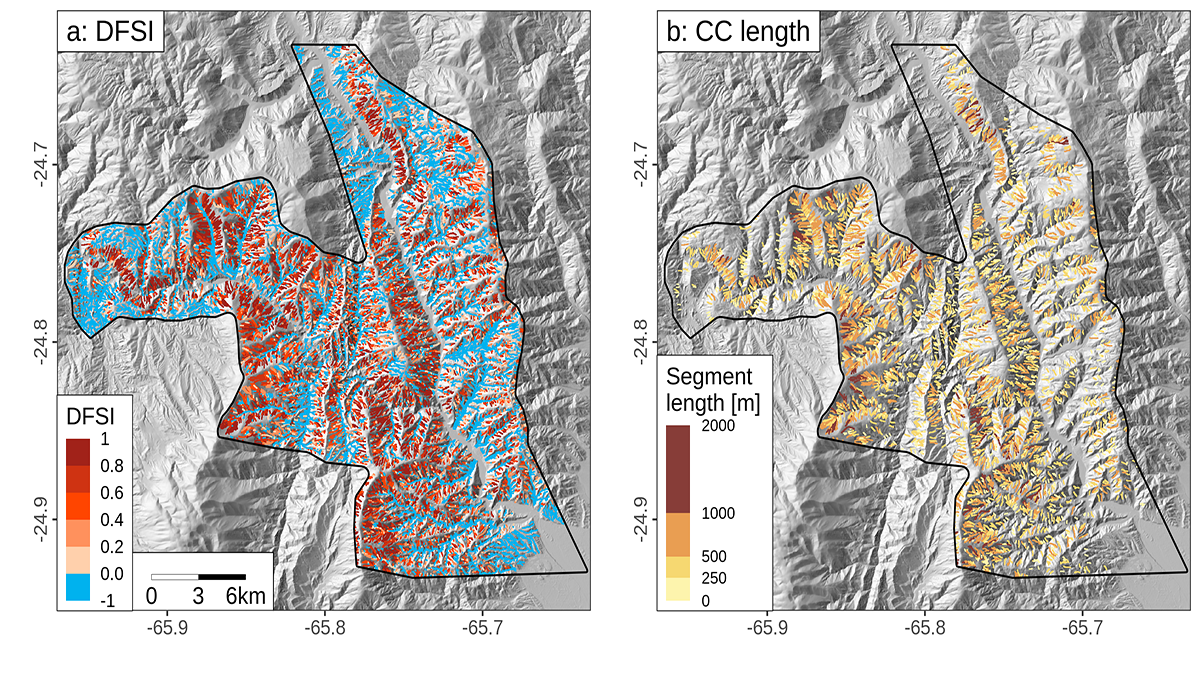Editors’ Highlights are summaries of recent papers by AGU’s journal editors.
Source: Journal of Geophysical Research: Earth Surface
Accurate mapping of portions of the landscape susceptible to debris flows is essential for hazard quantification and understanding how debris flows set fundamental landscape properties, such as topographic relief, over geomorphic time. In northwest Argentina, Mueting et al. [2021] describe two important methodological advances – best practices for digital terrain model generation from stereo satellite imagery and connected component analysis for debris flow channel identification – that enhance our understanding of both hazards and landscape evolution.
Instead of taking the traditional approach of defining a single drainage area threshold for debris flow-shaped channels, the authors much more precisely define the extent of those channels with connected component analysis, independent of drainage area. The analysis is calibrated to identify relatively long and steep channel segments with near constant slope, a tell-tale sign of long-term scour by debris flows. This precise mapping highlights where modern infrastructure is most susceptible to debris flows and also shows where debris flows have played the largest role in landscape evolution. As expected from geomorphic theory, but not often shown with quantitative topographic analysis, debris flow-shaped channels occur in the parts of the study area with the highest uplift rates, which are on the hanging walls of faults where the bedrock has been particularly tectonically sheared and fractured.
Although the focus of the study is debris flow channels, the methods are likely adaptable to other channel features, such as knickpoints, suggesting a more precise and nuanced understanding of entire channel networks is in our future.
Citation: Mueting, A., Bookhagen, B., & Strecker, M. R. (2021). Identification of debris-flow channels using high-resolution topographic data: A case study in the Quebrada del Toro, NW Argentina. Journal of Geophysical Research: Earth Surface, 126, e2021JF006330. https://doi.org/10.1029/2021JF006330
—Adam Booth, Associate Editor, Journal of Geophysical Research: Earth Surface

